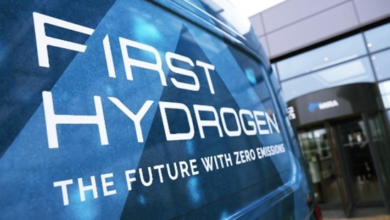Research shows hydrogen efficiently produced through proton ceramic membranes
The research shows hydrogen production through a new system based on proton ceramic membranes.

An international team, including the Institute of Chemical Technology (ITQ), a joint centre of the Spanish National Research Council (CSIC) and the Polytechnic University of Valencia (UPV), have developed a new electrified reactor to produce hydrogen in a more sustainable and energy-efficient way.
The team has successfully combined 36 individual ceramic membranes into a scalable, modular generator that produces hydrogen from electricity and various fuels with almost zero energy loss. It is the first time that the technology was demonstrated to produce hydrogen industrially.
The results of the work involved are promising for the competitiveness of both types in land and maritime transport and other markets and their industrial use.
The proton ceramic electrochemical reactors used in this study use electrical energy to extract hydrogen from other molecules with exceptional energy efficiency. The fuel can be ammonia, natural gas, biogas or other molecules with hydrogen. The project has made it possible to scale up an electrified reactor to reach a production of around half a kilo of pressurised hydrogen per day by electro compression, with very high purity and maximum energy efficiency, above 90%.
The ITQ energy conversion and storage group has shown that it is possible to work with this type of technology at 150 bars of pressure. In addition, with this system, CO2 that is produced in the process is not emitted into the atmosphere, it is transformed into a pressurised current for liquefaction and transport for later use or storage, thus allowing decarbonisation.
The results obtained in this work show for the first time that proton ceramic technology can be used to create scalable hydrogen devices that pave the way for industrial mass manufacturing. While other clean energies such as solar or wind are intermittent, hydrogen has the advantage of being able to store and distribute energy.
When energy is transformed from one form to another, there is a loss of energy, but the proton ceramic membranes, it combines different steps of hydrogen production in a single stage where the heat for the catalytic production of hydrogen is supplied by the electrochemical separation of gases to form a thermally balanced process.
Like batteries, fuel cells, and electrolysers, proton ceramic membranes are electrochemical energy converters. One of the keys to the breakthrough is a new component developed by CoorsTek Membrane Sciences from glass-ceramic and metallic materials, which combines the robustness at high temperatures of a ceramic and the electronic conductivity of a metal.
These membranes operate at elevated temperatures, between 400C and 800C, breaking down hydrogen into its subatomic particles (protons and electrons) and transporting the protons through a solid ceramic electrolyte.
In addition to ITQ, the research team includes scientific staff and engineers from the University of Oslo, the SINTEF research institute (Norway), and CoorsTek.
The research work is also funded by Shell, ExxonMobil, TotalEnergies, Equinor, ENGIE, Saudi Aramco, Gassnova, and the Norwegian Research Council.
The next step in the development program is to install a prototype standalone hydrogen generator on the campus of Saudi Aramco’s headquarters in Dhahran, Saudi Arabia.
